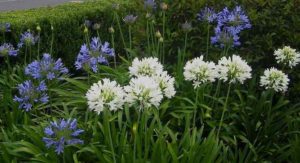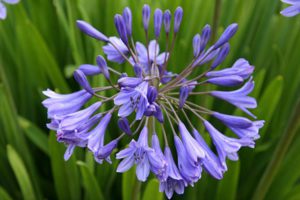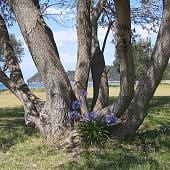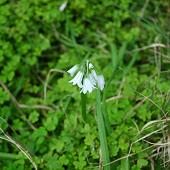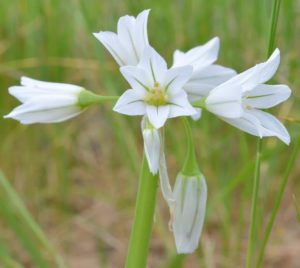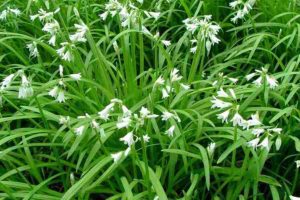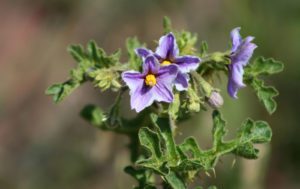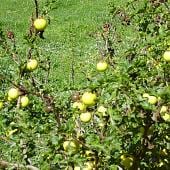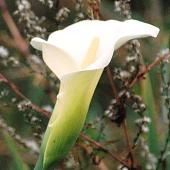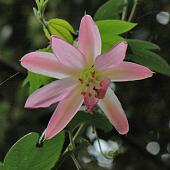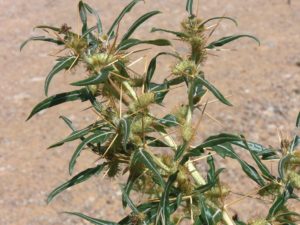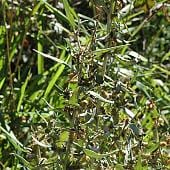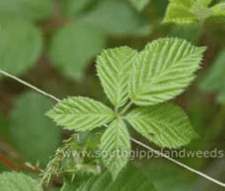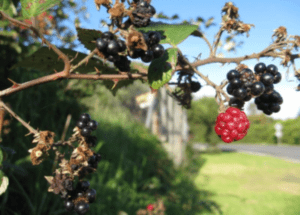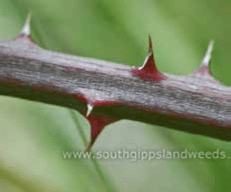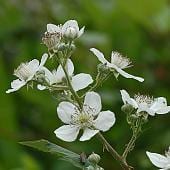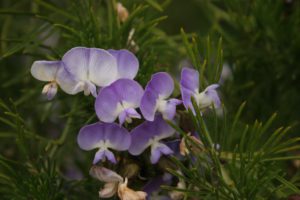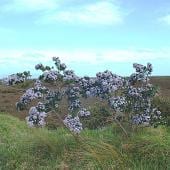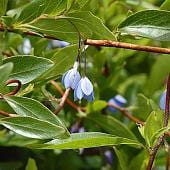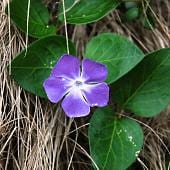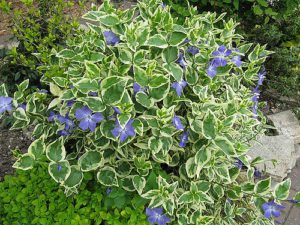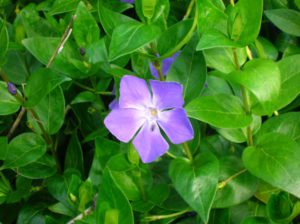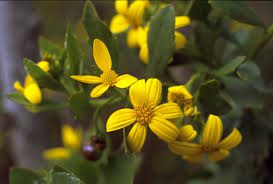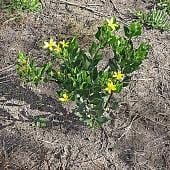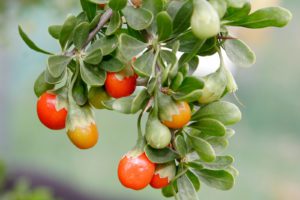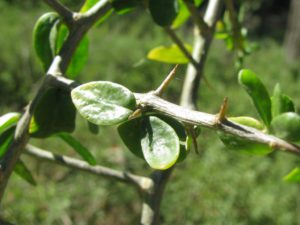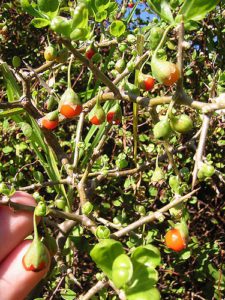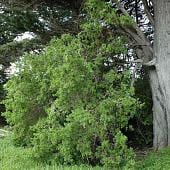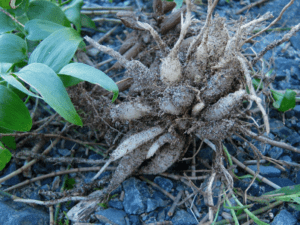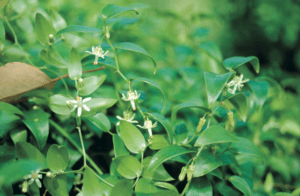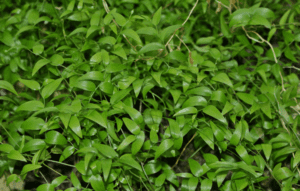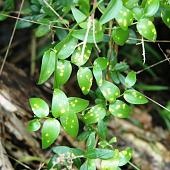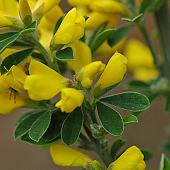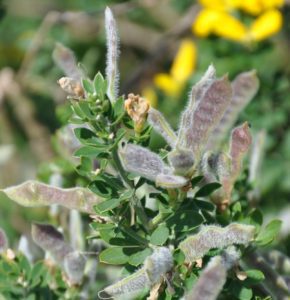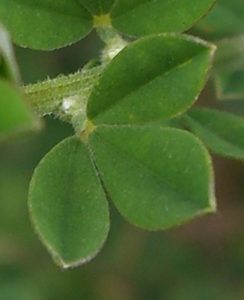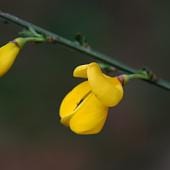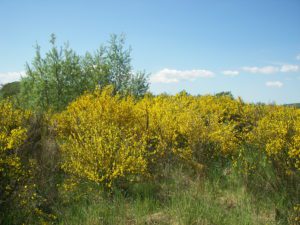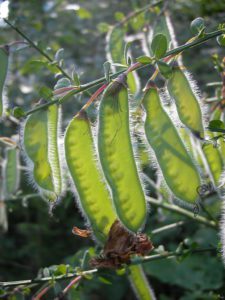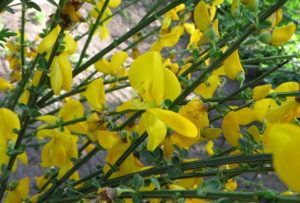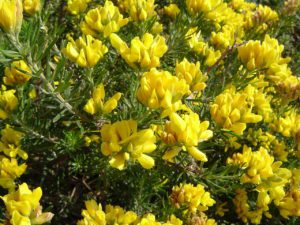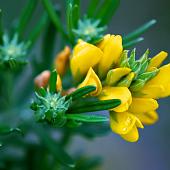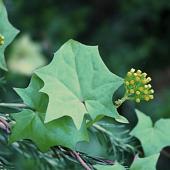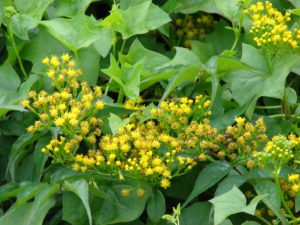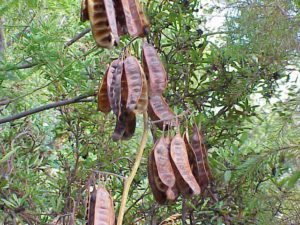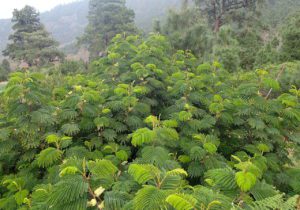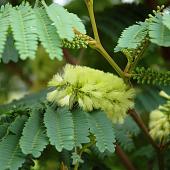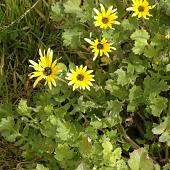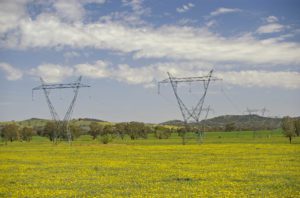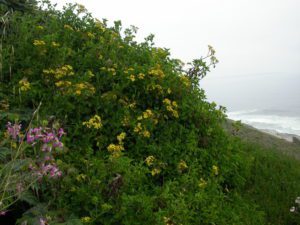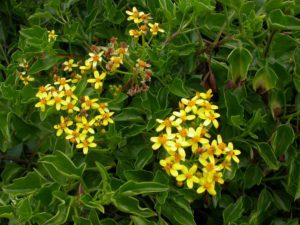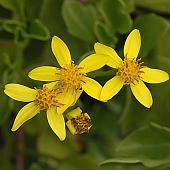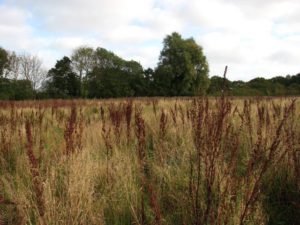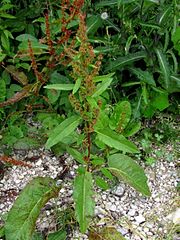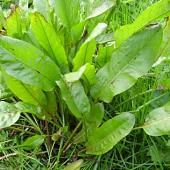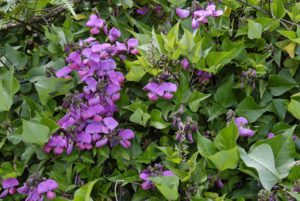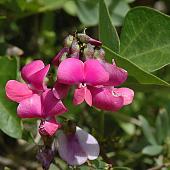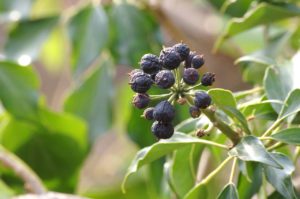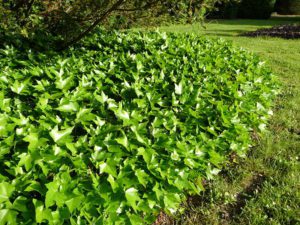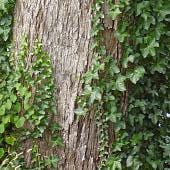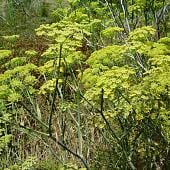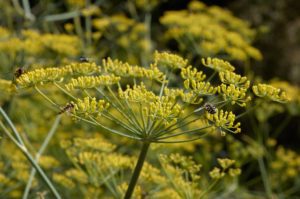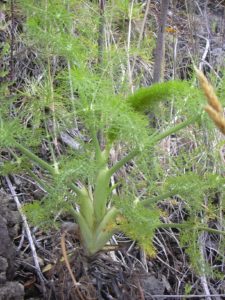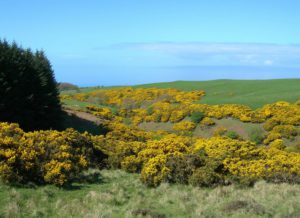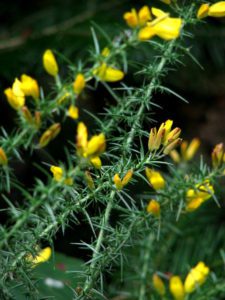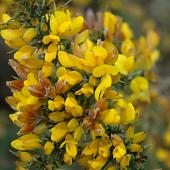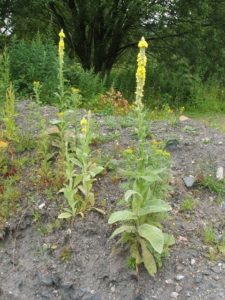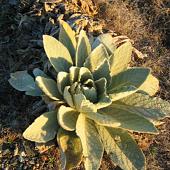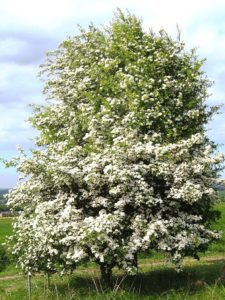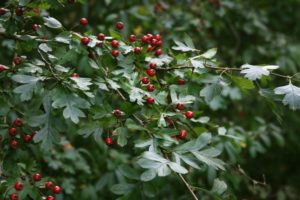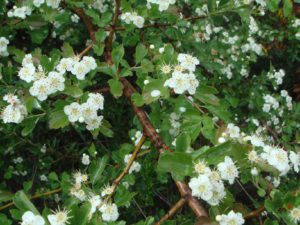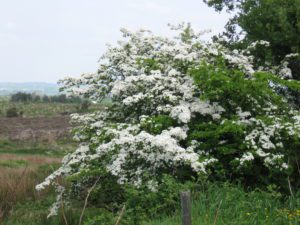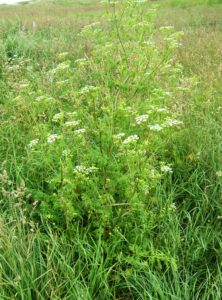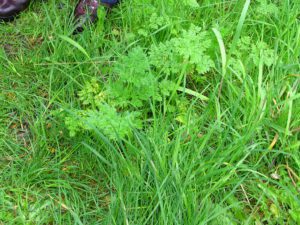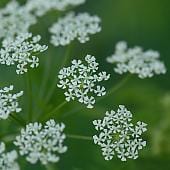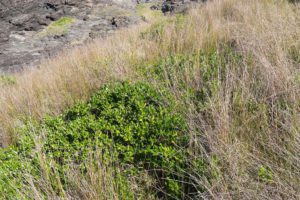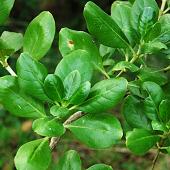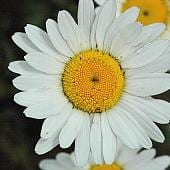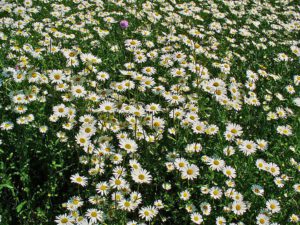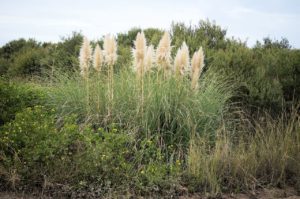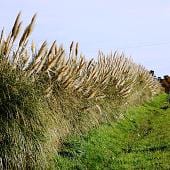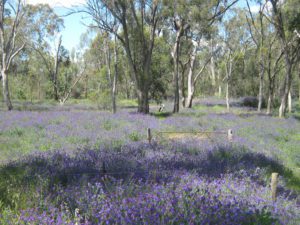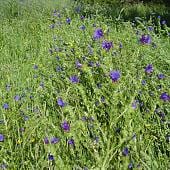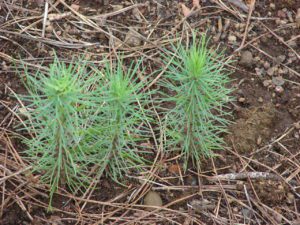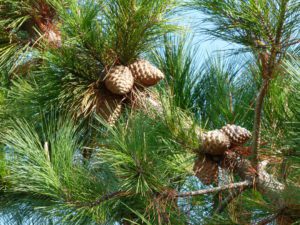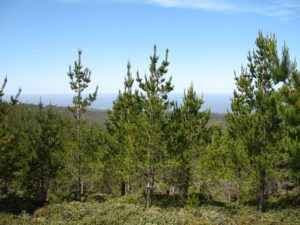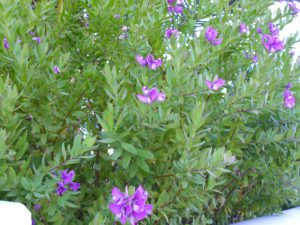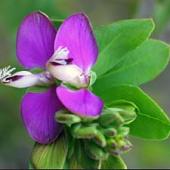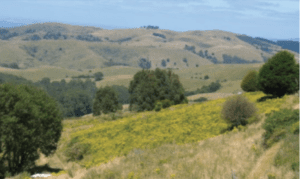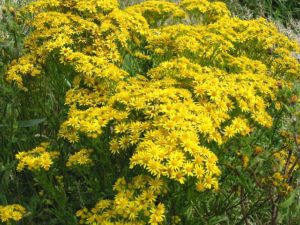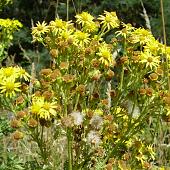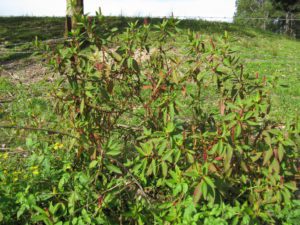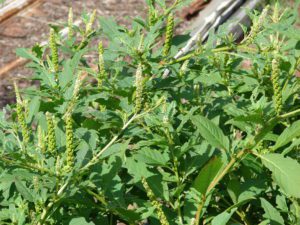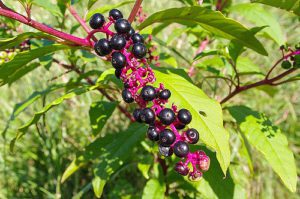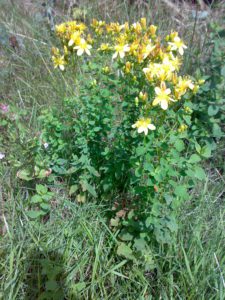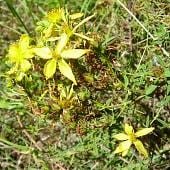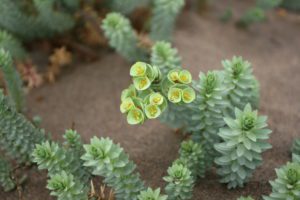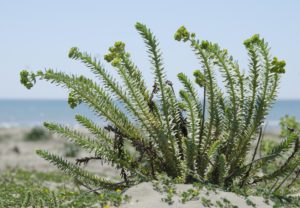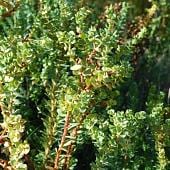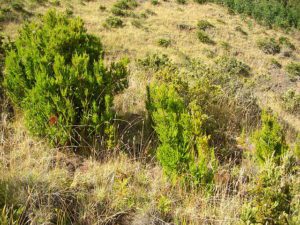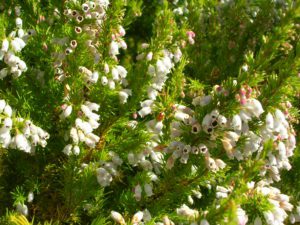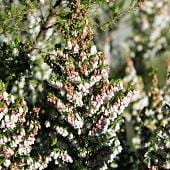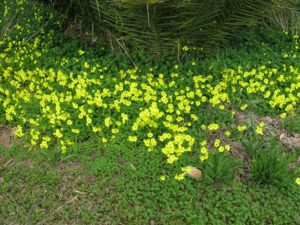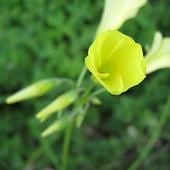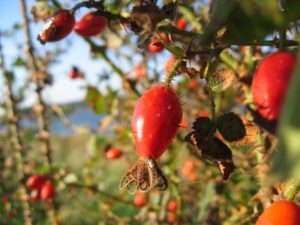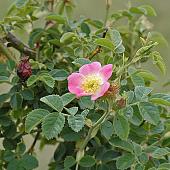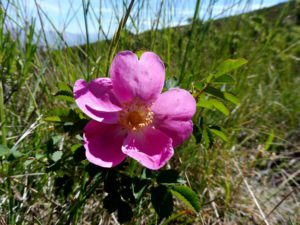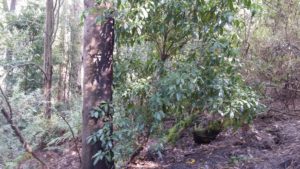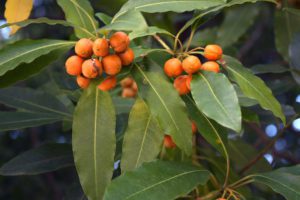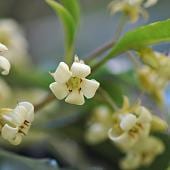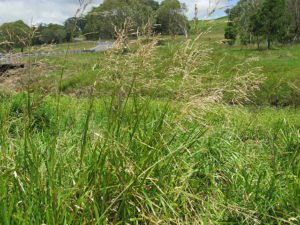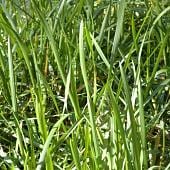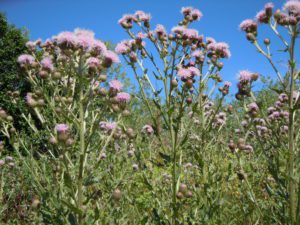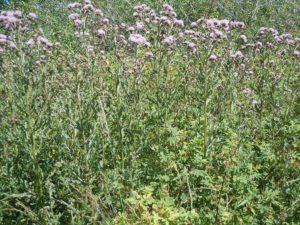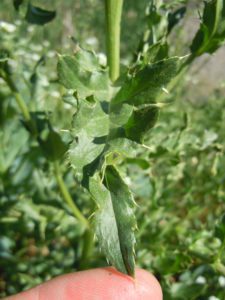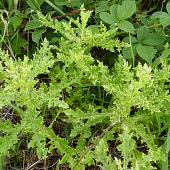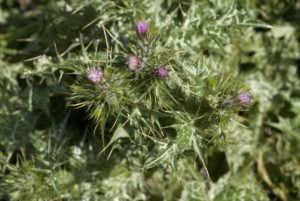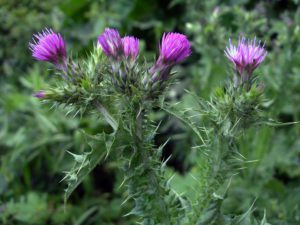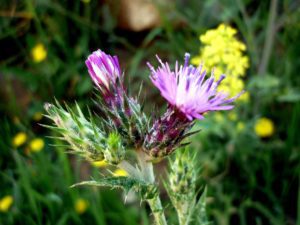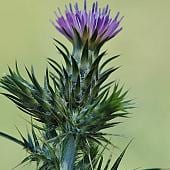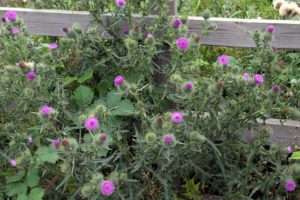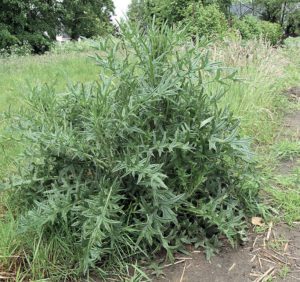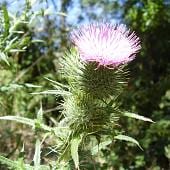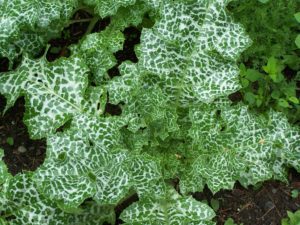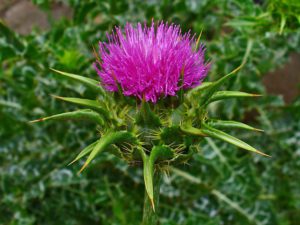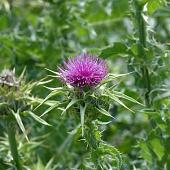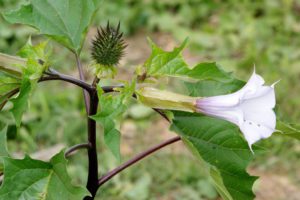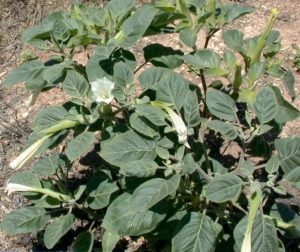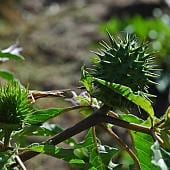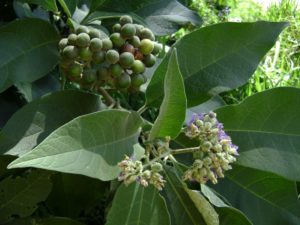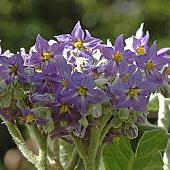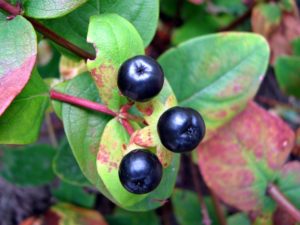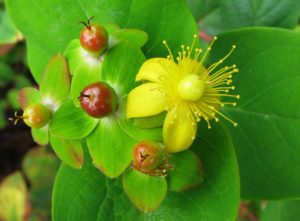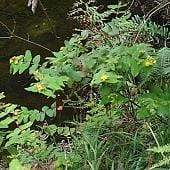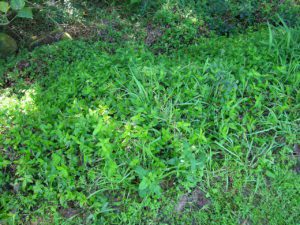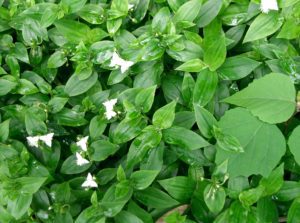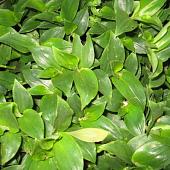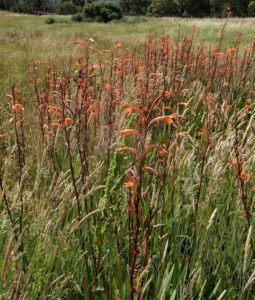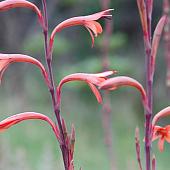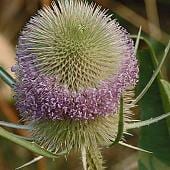Weed Identification & Control
Types of weeds
Weeds are placed under various categories based on their ability to spread and the damage they cause. You should be aware of these categories as it may help you prioritise your work.
Noxious weeds 
1. State Prohibited
2. Regionally Prohibited
3. Regionally Controlled
4. Restricted Weeds
Environmental weeds
Agricultural weeds
Individual weed control methods & information
Agapanthus Angled Onion Apple of Sodom Arum Lily Banana Passionfruit Bathurst Burr Blackberry Blue Butterfly Bush Bluebell Creeper Blue Periwinkle Boneseed (Bitou Bush) Boxthorn Bridal Creeper Broom – Cape/Montpelier Broom – English Broom – Flax leaved Cape Ivy Cape Wattle Capeweed Climbing Groundsel Dock Dolichos Pea English Ivy Fennel Gorse Great Mullein Hawthorn Hemlock Mirror Bush Ox-eye Daisy Pampas Grass Patterson’s Curse Pine Polygala Ragwort Red Ink Weed St John’s Wort Sea Spurge Spanish Heath Sour Sob/Oxalis Sweet Briar Rose Sweet Pittosporum Sweet Reed Grass Thistle – Californian Thistle – Slender/shore Thistle – Spear Thistle – Variegated Thornapple Tree Tobacco Tutsan Spiderwort/Trad Watsonia Wild Teasel Willow
Agapanthus 


Environmental weed
Agapanthus is a genus of herbaceous perennials that mostly bloom in summer. The leaves are basal, curved, and linear, growing up to 60 cm long. They are rather leathery and arranged in two opposite rows. The plant has a mostly underground stem called a rhizome that is used as a storage organ. The roots, which grow out of the rhizome, are white, thick and fleshy. The flower head is a pseudo-umbel subtended by two large bracts at the apex of a long, erect scape, up to 2 m tall. They have funnel-shaped or tubular flowers, in hues of blue to purple, shading to white. Able to tolerate salt spray, agapanthus readily grows on foreshores. The plant also tolerates drought, light frosts, fire and some degree of waterlogging.
Manual Control
Hand dig, bagging all plant parts and removing from site. Remove spent flowers in mid-late summer to prevent seeds forming as a means of confining agapanthus to gardens.
Angled Onion 

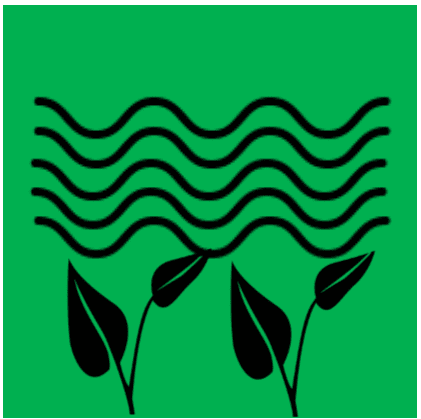


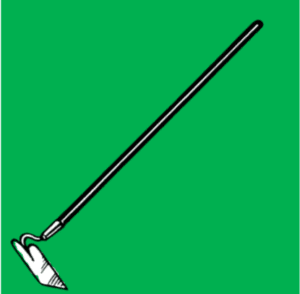
Restricted weed
Manual Control
Small Plants
- Hand pull or use a garden fork ensuring removal of bulbs and adjoining corms and rhizomes.
Large Infestations
- Remove flower heads prior to seed set, using either lawn mower or brush cutter.
- Cover infested area with dense mulch matting (eg. Old carpet, thick newspaper), topped with appropriate mulch, after active growth, and leave to rot down.
- Alternatively, cover with black plastic prior to seed set. Leave plants to ‘cook’ for several weeks or longer if possible before hand removing or spot spraying the weakened plants.
Chemical Control
Treat at the bulb exhaustion stage late winter to early spring as treatments outside this period do not provide the same degree of control. Use Brush Off and Pulse penetrant. (off label*). Do not spray near streams or waterways. Always check the herbicide label before use.
Apple of Sodom 




Regionally controlled
Solarnum linnaeanum is a dark green, erect bushy shrub to 1.5m high. Flowers: Most of the year, purple to white. Fruits: Rounded berries 2-3cm wide, mottled green, ripening to yellow then drying to brown, contain flat light brown to orange seed, 2-3cm long. Stems: Green and purplish-brown stems, prickles present.
Note: Fruit are poisonous to stock and humans, especially when green.
Manual Control
Plants can be dug out.
Chemical Control
Apple of Sodom can be cut and painted either with Round Up of Vigilant Gel during flowering to fruiting spring to summer. Spray with Tordon 75D. Always check the herbicide label before use.
Arum Lily 


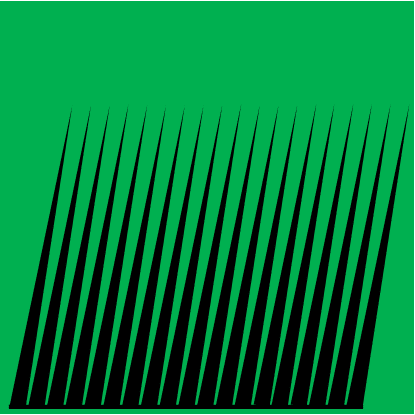

Environmental weed
Zantedeschia aethiopica is poisonous to stock and humans, likes to grow along waterways and wetland edges. It is able to form large spreading clumps that choke out indigenous plants.
It is an evergreen and will grow to 1.5m tall with a tubular type white flower. Spreads by rhizome, water, birds foxes and livestock and dumped garden waste.
Manual Control
Can be dug out, but all bulb matter should be removed.
Chemical Control
Cut and paint with Vigilant Gel. Always check the herbicide label before use.
Banana Passionfruit 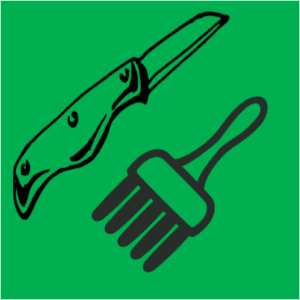



Environmental weed
Passiflora mollissima is a fast growing woody-stemmed tendril climber which forms dense layered mats. Long tubed pink flowers in summer followed by edible fruit.
Manual Control
Hand-pull or dig young plants.
Chemical Control
Cut and paint with Round Up close to the ground. Spray is more effective with a penetrant. Care should be taken when spraying next to waterways. Alternately, scrape and paint old stems. Always check the herbicide label before use.
Bathurst Burr 



Regionally controlled
Xanthium spinosum L is an erect, much branched, mainly summer-growing annual herb commonly 30 to 60 cm high, occasionally to 1 m,reproducing by seed. Most germination occurs after rain or irrigation in late spring and summer. Older plants produce burrs in February while late germinating plants produce them when only a few weeks old. Plants generally die early in winter but mature plants may be found at any time of year.
Manual Control
Can be grubbed out but has a very deep taproot.
Chemical Control
Herbicide options are Amicide 625, Round Up Biactive, and Kamba M. Always check the herbicide label before use.
Bathurst Burr information sheet
Blackberry 





Regionally controlled
Rubus fructicosus L. agg. is a perennial, semi-deciduous shrub with prickly stems (canes) that take root where they touch the ground, often forming thickets up to several metres high. The stems, which grow several metres long, may be green, purplish or red, and are generally thorny and moderately hairy. Young canes emerge from buds on the woody root crown each spring and grow very rapidly (50–80 mm a day). Leaves are usually dark green on top with a lighter green underside. The leaf veins and stalks are covered with short prickles. Clusters of flowers are white or pink. The berries change colour from green to red to black as they ripen. The plant is semi-deciduous and may shed its leaves in winter.
The control of Blackberry is a long-term process and cannot be achieved with a once off effort. As such, the fist step in controlling blackberry involves establishing a basic management plan that aims to identify the infestation and set realistic short and long term goals that can be monitored. There is a range of management options available for controlling blackberry, including physical methods, biological control and herbicides. Herbicides are the most reliable method for achieving local control. Typically treat with herbicide when the blackberry is actively growing between November to April (ideally prior to fruiting). Techniques for herbicide application include foliar, cut stump, granules or gel, and aerial applications.
Manual Control
Hand weeding: This is effective only under very limited circumstances. Even seedlings and small plants are difficult to pull out by hand. If possible, all of the root system should be removed using a mattock or shovel because blackberry will regrow from any root fragments left in the soil.
Chemical Control
Spray is most effective when blackberry is growing at its best usually from November to April ideally before fruiting. Completely spray all canes and leaves. Use Brush Off, Brushkiller 600. Note: wetter should be added. Canes should be at least 1 metre long; use clean water. Grazon (ACUP required) this product can be residual in soil for up to 12 months. Always check the herbicide label before use.
Blackberry Weed Managment Guide (PDF)
Blackberry Best Practice Management Guide (PDF)
SGLN blackberry weed fact sheet
Blue Butterfly Bush 


Environmental weed
Psoralaea pinnata is a highly invasive weed of heathland, woodland, drier forests, swampy and riparian areas. It is also reported to invade dry coastal vegetation, pasture, forestry plantations, roadsides and waste places. In the species native range it is reported to grow in damp places, often in depressions with an open aspect at higher altitudes.
Manual Control
Cut down larger bushes. Hand pull smaller plants.
Chemical Control
Spray with a half strength application of Round Up (off label*) Always check the herbicide label before use.
Bluebell Creeper 



Environmental weed
Sollya heterophylla is an evergreen, woody based, twining climber with attractive blue flowers. Smothers ground-flora smaller shrubs and trees. A garden escape with the fruit spread by birds and foxes. Highly invasive in Victorian coastal woodlands.
Manual Control
Plants can be hand-pulled or dug out. To prevent regrowth ensure the roots are removed. Stems can be severed at the base and left to dry out in the canopy. Where practical gather any fruit from cut stems and dispose of site.
Chemical Control
Plants can be cut and painted with glysophate in spring or early summer. Foliar spraying with product such as Brush Off is possible but care is needed to prevent other vegetation damage. Always check the herbicide label before use.
Blue Periwinkle 




Environmental weed
Vinca major is often planted as a colourful ground cover for shady areas, but it smothers out native vegetation and overtakes the ground layer. It invades moist and shady
sites in bushland as well as waterways.
• Spreads by stems along the ground
• Broken pieces left behind will grow into new plants
• Plant pieces can also spread by water and established downstream
• Spread by dumping garden waste
Manual Control
Cover infested area with black plastic, leave for two months then remove. Repeat if necessary. Can be slashed but will grow back. All root structure has to be removed. Mulching may control
Chemical Control
To date there is no registered chemical, off label* you can try and use Round Up with Pulse penetrant but repeat treatment will probably be required. Always check the herbicide label before use.
Blue Periwinkle management guide (PDF)
Boneseed (Bitou bush) 




Regionally controlled
Chrysanthemoides monilifera is an erect perrenial shrub to 3m high with dull green paddle shaped leaves. Young leaves often covered in cottony down. Bright yellow daisy flowers in winter to summer, green berries in summer which turn in to hard black seeds. Sheds up to 50,000 seeds per plant. Spreads by birds, animals and water.
Manual Control
Boneseed can be physically removed
Chemical Control
Brush Off plus Pulse penetrant. Spring through to summer when actively growing. Always check the herbicide label before use.
Boneseed weed management guide (PDF)
Boxthorn 



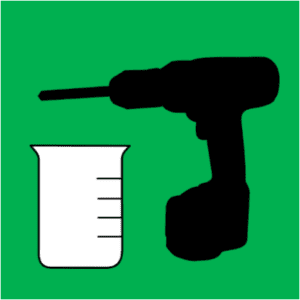


Regionally controlled
Lycium ferocissimum grows on all soil types, but establishes best on lighter soils, particularly along dry creek beds. It has been used as a hedge plant from where it has spread into pastures, neglected areas, and along roadsides, railway reserves and waterways. Boxthorn can invade dry coastal vegetation, lowland grassland and grassy woodland, riparian vegetation and rock outcrop vegetation.
Manual Control
Bushes can be cut down and burned but all root material would have to be dug out. Will regrow from any left in ground,
Chemical Control
Cut and paint with Round Up or Vigilant Gel. Registered chemicals are Brush Off and Grazon (ACUP required). This plant is difficult to kill and retreatment is often neccesary. Pulse penetrant can be added to assist chemical take up. Always check the herbicide label before use.
Boxthorn Weed_Management_Guide (PDF)
Bridal Creeper 


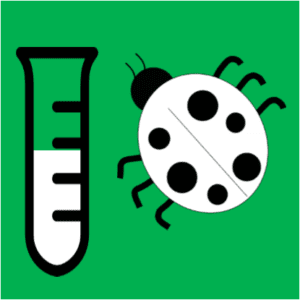
Restricted weed
Asparagus asparagiodes is a very serious threat to indigenous vegetation. It prevents germination of native ground cover and shrubs by depriving them of light. It will also damage other vegetation that it climbs. Roots can be produced whenever the stems are in contact with the soil. Disturbance created by control may allow more weeds to colonize so follow up is needed. Bridal creeper was introduced to Australia as a garden plant and is sometimes sold for hanging baskets in commercial nurseries. It has been in Australia since at least 1871.
Biological Control
Releasing spore rust is effective in controlling Bridal Creeper. Contact South Gippsland Landcare Network or DPI for further information.
Chemical Control
Brush Off (off label* in Victoria) can be effective but care should be taken to avoid killing native vegetation. Always check the herbicide label before use.
Bridal Creeper coastal note (PDF)
Bridal Creeper Weed Management Guide (PDF)
Broom – Cape/ Montpelier 



Regionally Prohibited
Genista monpessulana is an erect perennial shrub with clover shaped leaves with dense clusters of yellow pea flowers in spring and summer. It has 5 to eight hard seeds in flat silky pods which pop out up to 7m in summer. This is a serious weed in South Gippsland with the seed lasting up to 80 years in the soil. Establishes along roadsides and is spread by vehicles and slashing.
Manual control
Small seedlings can be removed by hand. Larger plants can be pulled out if soil is soft.
Chemical control
September to December from flowering while it is actively growing. Spray with Grazon (ACUP required). Always check the herbicide label before use.
Cape Broom Landcare Note (PDF)
Broom – English 



Regionally controlled
Cytisus scoparius is an erect shrub to 2m high with long dark green angular branches and small inconspicious leaves. Large pea shaped flowers in Oct to Nov. Can produce thousands of hard seed lasting up to 80 years in the soil.
Manual control
Small seedlings can be removed by hand. Larger plants can be pulled out if soil is soft.
Chemical control
September to December from flowering while it is actively growing. Spray with Grazon (ACUP required) or Tordon 75D. Always check the herbicide label before use.
English Broom Landcare Note (PDF)
Broom – Flax Leaved 



Regionally controlled
Genista linifolia is an erect woody shrub, light green slender leaves, smooth above and silky-white below. It has clusters of bright yellow pea-like flowers late spring – summer and then two to three seeds in flattened silky pods. Highly invasive bush on roadsides, pasture and bushland. Each plant can spit out up to 250,000 seeds in summer with and average life of 80 years on the soil.
Manual control
Small seedlings can be removed by hand. Larger plants can be pulled out if soil is soft.
Chemical control
September to December from flowering while it is actively growing. Spray using Grazon (ACUP required). Always check the herbicide label before use.
Cape Ivy 



Environmental weed
Delairea odorata is a perennial climber with stems that reach up to 10m. Fleshy, lush, green, ivy-shaped leaf with 5-7 lobes. Leaves are arranged singly on alternate sides of the stem and are variable in size. Leaves are often shiny. Flowers are conspicuous clusters of small, unpleasantly scented yellow, daisy-like flower heads. July – September. The seeds are tiny with a crown of hairs which drop off after the seed has dispersed. Cape Ivy forms a thick mat on the ground layer, smothering out native plants. Used as a screen and on fences, it quickly climbs up trees and overtakes the garden and bush. Spreads by climbing over other plants.
• Seeds are spread by birds, wind, water, soil and dumped garden waste
• Cut stems will re-grow when conditions are suitable
• Plant fragments will grow into new plants
• Not widely available in nurseries but common at markets
Manual control
Chemical control
Cut stem and paint with a suitable herbicide any stump that is to be left in the soil. Spray from June to September using Lontrel which is the effective registered chemical. Be careful not to spray native vegetation. Always check the herbicide label before use.
Cape Wattle 

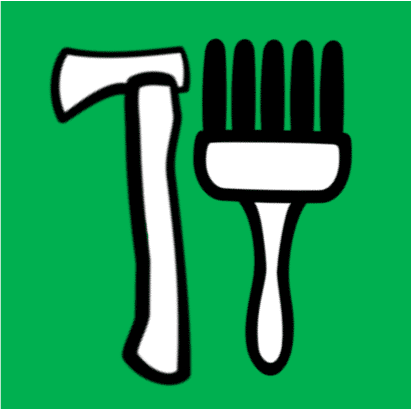



Paraserianthes lophantha (previously Albiza lophantha) Native to Western Australia. A popular ornamental tree with dark-green fern-like leaves. Greenish-yellow bottlebrush-like flower spikes in late autumn-spring. Seeds in reddish-brown pods over summer. Seed is dispersed by birds, ants, slashing, machinery, in soil and garden refuse. It invades woodlands, forests, riparian environments, and coastal areas.
Manual control
Remove plants by pulling by hand or if larger, machinery.
Chemical control
Cut and paint with Round Up or Vigilant Gel stump as close to ground as possible. Always check the herbicide label before use.
Capeweed 


Agricultural weed
Arctotheca calendula is originally from Africa. It is a widespread annual herb with divided, spreading leaves and yellow daisy like flowers spring to summer. It is spread by animals, wind and machinery. It invades bare areas in paddocks and waste places.
Manual control
Can be grubbed out all root material should be removed. Establishing and maintaining a dense highly productive persistent perennial pasture is the key to keeping capeweed in check.
Chemical control
Best time is early seedling stage late winter to early spring. See Agricultural Note for more detailed information. Chemical used is Amicide 625 spray graze technique (refer PDF file). For spot spraying Round Up can be used (non selective). For selective spot and boom spraying Kamba M or Lontrel. Always check the herbicide label before use.
Capeweed_Agricultural_Note (PDF)
Climbing Groundsel 



Environmental weed
Manual control
Hand weed. Young plants can be hand-pulled or dug. When removing any species of vines, be careful about pulling them down, as this can damage the supporting plant. Generally they are better left to die off and break up in place, unless this would involve leaving a lot of seed in the canopy. Try to control vines before seed has formed to avoid this problem. Small plants or non climbers can be solarised.
Chemical control
Cut and paint with Round Up or Vigilant Gel. No registered chemical available to date. Always check the herbicide label before use.
Dock – Broadleaf Dock 



Agricultural weed
Docks are often indicative of moist to wet ground with poor drainage and at least intermittent waterlogging. Freshwater swamps and marshes are common habitats. However the exotic species, in particular, will grow readily in seasonally wet depressions, waste lands, roadsides and cultivated ground. None of the species are, if ever, associated with saline environments.
There are about 10 species of Dock found in Victoria. Most species are common and widespread. Native species include Slender Dock (Rumex brownii), Wiry Dock (R. dumosus), Mud Dock (R. bidens) and Glistening Dock (R. crystallinus). Exotic species include Curled Dock (R. crispus), Clustered Dock (R. conglomeratus), Fiddle Dock (R. pulcher) and Broad-leaf Dock (R. obtusifolius).
Manual Control
Docks are perennials, they develop a deep tap root. Hoeing or cultivation not recommended as the plant will regrow from the root crown or from pieces of root if not completely removed. Renovating the paddock to improve drainage and soil compaction, and establishing healthy perennial pasture can help control.
Chemical Control
Spray plants at the early rosette stage in early winter. A flowering stem emerges during spring and the seed matures through summer. The stems usually die back during autumn and the plants over-winter as rosettes. Chemicals: Tigrex selective herbicide or glyphosate are registered for use in Victoria. Always check the herbicide label before use.
Dolichos Pea 



Environmental weed
Dipogon lignosus is a widely cultivated perennial vine with pink, purple or white pea shaped flowers in spring-summer. Seeds are contained in pods and can be ejected many meters from the parent plant. Highly invasive in bushland and dune systems.
Manual control
Chemical control
Can be cut and painted with Round Up on stumps cut close to the ground. Spray in spring-summer when actively growing. Round up (off label*) at half strength can be used being careful not not kill species that it is climbing. Always check the herbicide label before use.
Doichos_Pea_Coastal_Note (PDF)
English Ivy 



Environmental weed
Hedera helix is a widely planted ornamental creeper with green sword shaped leaves. Trailing stems form dense smothering mats. Greenish-yellow flowers in autumn are followed by black fruit. Seed is dispersed by birds, foxes, and possibly water. Stem fragments disposed of in garden refuse will also grow. Ivy invades seasonally moist, shaded or sunny positions in wet forest, dry forest and coastal areas.
Manual control
Chemical control
Fennel 



Restricted weed
Foeniculum vulgare is an erect, robust and many stemmed perennial herb strongly smelling of aniseed. Wild fennel has small yellow flowers in clusters grouped in umbrella shapes. Seeds are 3-6 mm long and yellow brown. Seeds are dispersed by water, wind, machinery, slashing and in soil. Wild fennel invades pastures and bushland.
Manual control
Fennel can be grubbed out, all root material will need to be removed.
Chemical control
Spray plants from spring onwards when growing well. Chemical; Kamba M. Always check the herbicide label before use.
Gorse 





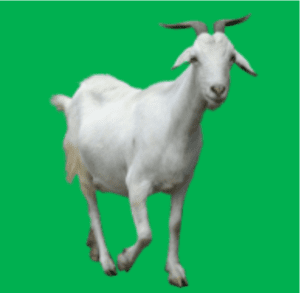

Regionally controlled
Gorse or Furze (Ulex europaeus) is a dense spiny shrub to 2-4m which forms impenetrable thickets excluding all other vegetation and providing a harbour for rabbits.
Seeds are viable for up to 30 years, are ejected forcibly from pods and is spread by machinery, birds, animals and vehicles. Fragrant, bright yellow pea flowers occur in clusters from September to January followed by long, dark, hairy pods containing 2-6 seeds. Seed viability is 2-5 years. Seeds are ejected forcibly from pods and is spread by machinery, birds, animals, vehicles and in soil. Gorse invades disturbed agricultural land, degraded landscapes, coastal areas and roadsides. Also woodlands, grasslands, riparian areas and forests.
Manual control
Chemical control
Gorse can be carefully cut and painted with Glysophate. Spray with Brush Off, Grazon (ACUP required) Follow the label and read critical comments. Add Pulse penetrant for better result. Spray when actively growing. Use clean water. Always check the herbicide label before use.
Gorse _Weed_Management_Guide (PDF)
Great Mullein 




Regionally controlled
Verbascum thapsus L is native to Europe and Asia. A stout biennial herb with erect stems and large rosette leaves covered in thick silvery hair. Numerous yellow flowers form along a rod-like structure. A garden escapee which is still found in cottage gardens. Seeds are produced after flowering. Dispersal is by seed, dumped garden refuse, road machinery, slashing. Mullein invades roadsides, railway lines, waste areas, degraded agricultural land.
Manual control
Can be grubbed out making sure tap root is removed. Great mullein occupies sites with low soil fertility and does not persist when fertility is raised. Improvement of soil fertility and pasture improvement are the preferred control methods on grazing land. The plant is rarely eaten by livestock so is encouraged by heavy grazing.
Chemical control
Spring when actively growing. Spray with Brush Off plus Pulse penetrant (off label*). Always check the herbicide label before use.
Hawthorn 




Regionally controlled
Crateagus monogyna is an erect deciduous small shrub to tree with thorny branches and small serrated bright green leaves. Once widely used for hedges. White or pink flowers in spring followed by red berries in autumn. Reproduces by seed which is dispersed by birds, foxes, possums, stock and water. Invasive along creeks, rivers and roadsides.
Manual control
Chemical control
Plains with stems less than 10 cm are easily removed by the cut & paint method. Large old plants are best controlled using drill (or frill) & fill method, undertaken during the spring-summer growing season. Drill holes 25–35 mm deep, 5 cm apart in trunk close to the ground and fill holes with herbicide. Always check the herbicide label before use.
Hemlock 






Regionally controlled
Conium maculatum is an erect annual or biannual herb with ferny leaves. This is a very poisonous plant to both humans and animals. Strong mousey odour when crushed. Looks similar to carrot plant. Flowers in summer white dense umbrella like. Dies back late summer. Widespread in damp shady places near waterways.
Manual control
Hemlock can be grubbed out, all root material will need to be removed.
Chemical control
Spring onwards when growing well. Be careful after spraying this is a highly poisonous plant, some livestock could eat after spraying. Chemical; Kamba M. Always check the herbicide label before use.
Mirror Bush 



Environmental weed
Manual control
Small plants can be hand weeded.
Chemical control
Larger plants can be treated with the cut and paint method using Round Up or Vigilant gel or the drill and fill or frill and fill methods with Round Up. Always check the herbicide label before use.
Ox-eye Daisy 





Regionally controlled
Leucanthemum vulgare is a perennial plant with long slender stalks and white daisy flowers with yellow centers in spring and autumn. It grows quite densely due to stems, which touch the ground often, take root and form new plants. Dispersal by seed. Spread by machinery especially slashing and animals.
Manual control
Small infestations can be hand weeded. Larger areas can be controlled by cultivation (early flowering stage- Sept). Cultivation should be to at least 15cm exposing and killing root system. Shallower cultivation over 2 or 3 years kills seedlings and regrowth from root pieces. Grazing in autumn and winter can aid control. Improve pastures to out compete the weed.
Chemical control
Can be controlled with various registered chemicals available e.g Kamba 500,Tordon 75D, Amitrole T (non-selective). Apply early flowering stage. Always check the herbicide label before use.
Pampas Grass 




Environmental weed
Cortaderia selloana is a robust large tussocky perennial grass with white or pink feathery flowers in late summer. As seeds fall, flowers appear white. Seeds are spread by wind, machinery and dumping of garden refuse. Pampas grass invades open, sunny areas which have adequate moisture. It is found along stream banks, roadsides and waste places and in native vegetation.
Manual control
Can be dug out if small.
Chemical control
Plants can be sprayed with Round Up. Can be burnt or slashed and regrowth sprayed. Always check the herbicide label before use.
Paterson’s Curse 






Regionally controlled
Manual control
Chemical control
Brush Off. Always check the herbicide label before use.
Patersons_Curse_Handbook (PDF)
Pine 




Environmental weed
Pinus radiata is native to the northern hemisphere. A tall, evergreen softwood tree to 40 m. Dark green needle-like leaves in dense clusters. Large seed bearing cones are produced at the end of branches. Seed is dispersed by wind and birds. Pines reduce soil fertility, produce a dense leaf litter and shade out other species.
Manual control
Hand remove small plants. For larger plants, cut off close to the base. Collect and burn all seed cones. Be aware of fire restrictions. Seedlings can be slashed to ground level.
Chemical control
Larger plants can be treated with the drill and fill method using Round Up. Always check the herbicide label before use. Mature plants may need specialist abourists to assist with felling next to infrastructure.
Polygala or Myrtle leaf Milkwort 



Environmental weed
Polygala myrtifolia is native to South Africa. An erect spreading shrub to 3m high with leaves oblong to oval (1.5-4cm long). Flowers most of the year, especially during late winter to early spring. Fruits are hear t-shaped capsules containing 2 seeds. Seed is dispersed by birds, ants, water, in soil and in garden refuse. A highly invasive weed of coastal areas. Plants tolerate salty winds and will grow in sun and full shade forming dense thickets.
Manual control
Hand remove seedlings. For mature plants, cut off close to the base. Follow up control will be needed for at least three years while the seed remains viable. Plants are relatively sensitive to fire, so burning can be used to kill adult plants however fire will also cause mass germination of seedlings requiring intensive follow up.
Chemical control
Larger plants can be treated with the cut and paint method using Round Up or Vigilant gel. Always check the herbicide label before use.
Ragwort 





Regionally controlled
Manual control
Ragwort can be pulled out by hand but will leave behind root fragments which will regrow.
Chemical control
Ragwort can be sprayed all year round but normally spring to summer when it is growing at its best. You can spray up to flowering stage. Once flowers have started to set seed it would be best to remove heads put in black plastic bag and spray the rest. Brush Off is the most widely used. Other chemicals are Kamba M. Grazon (ACUP required). Read label for rates, safe usage and critical notes.
Ragwort Weed_Management_Guide (PDF)
Red Inkweed 




Environmental weed
Manual control
Drag a railway iron or similar across heavy infestations to uproot the plants. Cut the roots about 50 mm below ground level with a mattock to control isolated or remaining plants. Cultivation with discs is also effective. Seedlings may be manually removed but older plants tend to break off and regrow unless cut below ground level with a mattock.
Chemical control
In open areas, a blanket wiper applying 1 L glyphosate(450g/L) in 2 L water can be used. Small infestations may be treated with 100 mL Tordon®75-D in 10 L water. This will control existing plants and has residual activity for control of seedlings. Larger infestations can be controlled with 50 g/ha metsulfuron (600g/kg) or 1 g in 10 L water for hand spraying. Half these rates will control seedlings. If surrounding areas are infested, seedlings will need to be controlled annually wherever birds roost. Always check the herbicide label before use.
St John’s Wort 





Regionally controlled
Manual control
Isolated plants or small infestations: Ensure that you have correctly identified the plant before removal. Physical removal is the best option where isolated plants are found on roadsides or in forest openings. They should be removed manually, preferably before they have seeded as they can become the source of much larger infestations. As much of the rootstock as possible should be removed to prevent re-sprouting and treated sites should be revisited regularly to ensure that there is no further germination or suckering.
Chemical control
Larger infestations: Small to large infestations can be treated with herbicide applied by spot-spraying or other suitable methods. As infestations become larger, a strategically staged approach for removal is advisable to ensure that treated areas are not reinfested. Chemicals: Grazon Extra. Starane 200. Tordon 75D. Always check the herbicide label before use.
St_John_Wort_Weed_Management_Guide (PDF)
Sea Spurge 


Environmental weed
Manual control
Always wear gloves and glasses when hand pulling.
Chemical control
A number of herbicides have been successfully used to control sea spurge, including glyphosate and metsulfuron-methyl. Advantages of using herbicide control include the potential for controlling much larger infestations. Herbicide treatment may also be an advantage where manual removal poses a problem, such as Aboriginal midden sites. Disadvantages include potential damage to off target species and windy conditions typical of coastal sites making herbicide application more difficult. Foliar spraying is the preferred herbicide application method for the control of large sea spurge infestations. Backpack spraying allows for larger areas to be treated than with hand removal, although some regrowth can be expected. Therefore follow-up treatment will be important. The cut and paste control method for sea spurge is highly effective on individual plants. Always check the herbicide label before use.
Spanish Heath 


Environmental weed
Manual control
Chemical control
Cut and paint with Round Up or Vigilant Gel. Spray when actively growing, August to November. No registered chemical in Victoria. Starane 200 can be used under off label* legislation. Always check the herbicide label before use.
Sour sob/Oxalis 


Regionally controlled
Oxalis pes-caprae is a weed of gardens, orchards, cereal crops and native bushland. Sour sob is a long-lived herbaceous plant growing each year from underground bulbs. It produces a rosette of leaves at ground level and leafless upright flowering stems 15-30 cm tall. Its leaves are borne on stalks 10-22 cm long and have three heart-shaped leaflets. Its bright yellow flowers have five petals and are borne in loose clusters. These flowers open only during sunny periods and close again at night or during dull conditions.
Manual Control
Constant and vigilant weeding prior to flowering. If you do not let the plant flower and continually weed you will eventually reduce the problem. However weeding is very difficult as the tiny bulblets drop off very easily and weeding can actually spread oxalis if you are not careful.
Chemical
Spot spray infestations with glyphosate (i.e. Roundup) just prior to flowering. Time of flowering will vary from year to year and between sites. As not all plants will be at the same stage further control will be required in the following years. Care must be taken to avoid off target damage when using herbicides in bushland. Always check the herbicide label before use.
Sweet Briar Rose 




Regionally controlled
Manual control
Bushes can be hand pulled. Wear suitable clothing to prevent injury from thorns.
Chemical control
Apply when bushes are actively growing. Avoid spraying when bushes are stressed, when leaf fall has commenced or after the end of February. Handgun – Spray to thoroughly wet all foliage, but not to cause run-off. Registered chemicals are Grazon and Brush Off. Always check the herbicide label before use.
Sweet Pittosporum 


Environmental weed
Pittosporum undulatum occurs naturally throughout much of Gippsland. Masses of sweet scented flowers in spring which develop in to orange berries in autumn. Has become very invasive along roadsides and bushland out competing other natives. Becoming more widespread due to altered drainage patterns, reduced fire frequencies and increased dispersal by birds. Westward distribution due to popularity as a garden plant. Sweet pittosporum has dense foliage which reduces light levels which effects the composition of ground flora and leaf litter altering soil chemistry.
Manual control
Small plants can be hand pulled. Larger plants can be mechanically removed with a woody weed puller.
Chemical control
Cut and paint with Round Up or Vigilant Gel. Frill and fill with Round up. Always check the herbicide label before use.
Sweet Reed Grass 




Environmental weed
Glyceria maxima is a robust perennial grass native to Europe that grows 90-250cm in height. Leaves are bright green, 30-60cm long. Leaf blades are flat with a prominent midrib and rough margin. Flowers appear in spring in many branched 15-45cm long panicles. Roots are fibrous, growing from nodes on the rhizomes and may reach a depth of 1 metre. Previously known as Poa aquatica. Infestations in dams and waterways will affect water quality, choke out other desirable species and can cause cyanide poisoning in stock.
Manual control
This plant can be removed by hand or mechanical means but any rhizomes left behind will re grow. Covering with black plastic can achieve 100 per cent control. This may be suitable for small infestations where the plastic can be securely fixed in place.
Chemical control
Spring through to summer when it is actively growing. Chemicals to use are Round Up Biactive. Always check the herbicide label before use.
Thistle – Californian 


Regionally controlled
Cirsium arvense is an erect perennial thistle with a creeping rootstock. The leaves are very dissected with spiny margins and white hairs underneath. Heads of round purple-pink flowers appear in summer followed by seeds attached to hairs. Reproduces from seed, creeping roots and rhizomes. Californian thistle prefers sub-humid to humid, cool temperate regions where it occurs in open, moderately-warm situations up to sub-alpine levels. In Australia, it is generally confined to pastures, cultivated crops, roadsides and neglected sites. Although it is more vigorous in the wetter areas where rainfall exceeds 750 mm, Californian thistle is capable of growing in drier areas and can adapt to most soil types.
Chemical control
This thistle tends to appear later in the season than other thistles normally seedlings appear around December flowering March onwards, spraying is effective through this period. Chemical Lontrel is the registered and most effective due to the long deep root system. Always check the herbicide label before use.
Thistle – Slender/Shore 



Regionally controlled
Carduus pycnocephalus and C. tenuiflorus are erect annual herbs, commonly 60 to 100 cm high but up to 2m, reproducing by seed. Seed germinates in the 6 weeks following the autumn break. Seedlings develop into rosettes and remain in the rosette stage over winter. Flowering stems are produced in early spring and flowering continues from September to December. Plants die in early summer after flowering, but dead stems can remain standing for months.
Manual control
Can be successfully chipped out with a hoe when they are mature and they shouldn’t grow back. When they are young, unless the tap root is not removed they can regrow. If chipped out when flowering and left in paddock it will still seed and further contaminate pasture.
Chemical control
There are various chemicals available to foliar spray, most common are Amicide 625, Kamba M and Lontrel. Boom spray in Autumn or Spring while plants are seedlings with a selective registered herbicide such as Amicide 625. Spot spray spring to summer. When mature a stronger chemical is neccesary such as Kamba M or Lontrel. Always check the herbicide label before use.
Thistle – Spear 



Regionally controlled
Manual control
Spear thistles can be successfully chipped out with a hoe when they are mature and they shouldn’t grow back. When they are young, unless the tap root is not removed they can regrow. If chipped out when flowering and left in paddock it will still seed and further contaminate pasture.
Chemical control
There are various chemicals available to foliar spray, most common are Amicide 625, Kamba M and Lontrel. Best time to spray -Boom spray in Autumn or Spring while plants are seedlings with a selective registered herbicide such as Amicide 625. Spot spray spring to summer. When mature a stronger chemical is neccesary such as Kamba M or Lontrel. Always check the herbicide label before use.
Thistle – Variegated 



Regionally controlled
Silybum marianum is an annual or biennial herb which can grow up to 2.5m. Leaves are variegated and hairy. Large purple flowers are produced at the end of branches in late spring-summer. Each flower head can produce up to 200 seeds each attached to a pappus of fine hairs.
Manual control
Can be grubbed out all root material should be removed. When to control: Autumn – spring is the best time when they are emerging.
Chemical control
Kamba M Selective herbicide or Lontrel herbicide. Always check the herbicide label before use.
Variegated_thistle_Landcare_Note (PDF)
Thornapple 





Regionally controlled
Datura spp. An erect, vigorous annual with large leaves and much branched stems. Trumpet shaped white – pink flowers spring – summer. All parts of the plant, but particularly the seeds are toxic. Fruits/Seeds: Each species has a four compartmented seed capsule covered in dense spines. Dispersal: From seed in fodder and contaminated grain. Invades: Pastures, roadsides and wastelands
Manual control
Chemical control
Cut and paint with Glysophate or foliar spray with Glysophate (e.g Round Up). Always check the herbicide label before use.
Tree Tobacco 




Environmental weed
Manual control
Chemical control
Cut and paint with Round Up or Vigilant Gel. Always check the herbicide label before use. Wear gloves and protective clothing.
Tutsan 



Regionally controlled
Hypericum androsaemum is an erect perennial shrub to 1.5m. Slender reddish stems with opposite leaves, Flowers produced in spring-summer have five yellow petals with numerous stamens. Seeds are produced in pulpy, black capsules. Seed is spread by birds, foxes, machinery and in soil and garden refuse. Highly invasive in cool moist forest environments. Tolerates deep shade and open sunny environments with sufficient moisture.
Manual control
Seedlings can be hand pulled if all the roots can be removed. Use a trowel or knife to loosen the soil first.
Chemical control
Cut and paint with Glysophate or Vigilant Gel. When to spray; spring when it is emerging and leaves are new. Foliar spray with Tordon 75D add Pulse penetrant. Always check the herbicide label before use. Keep in mind that there are restrictions on the use of herbicide in watercourses.
Spiderwort or Trad 



Environmental weed
Manual control
Chemical control
There are a number of herbicides registered for use in Victoria. STARANE 200 HERBICIDE or TORDON 75-D are just two examples. Repeat treatments will be needed. Surfactants will improve penetration into the waxy-coated leaves. Keep in mind that there are restrictions on the use of herbicide in watercourses. Always check the herbicide label before use.
Watsonia 




Regionally controlled
Manual control
When manually removing all bulbils should be removed. This is difficult. Hand dig, ensuring all corms are removed. Extensive follow-up required. Remove and bag all bulbils.
Chemical control
The registered chemical is Amitrole-T. Some success can be achieved using Brush Off, Round Up and Pulse pentetrant mix. Re-treatment will probably be required. Always check the herbicide label before use.
Wild Teasel 


Regionally controlled
An erect biennial herb to 2m high, reproducing by seed. This weed from Europe occurs mostly on neglected sites, roadsides and poorly managed pastures.
Manual control
Isolated plants are best dealt with by mattocking, taking care to remove as much of the tap root as possible.
Chemical control
Current registered chemical to control is Estercide 600 Herbicide (ACUP required) Always check the herbicide label before use.

